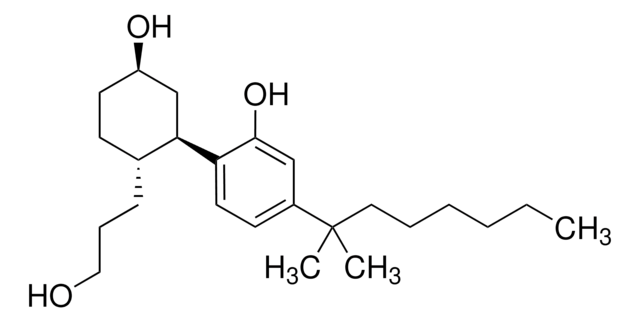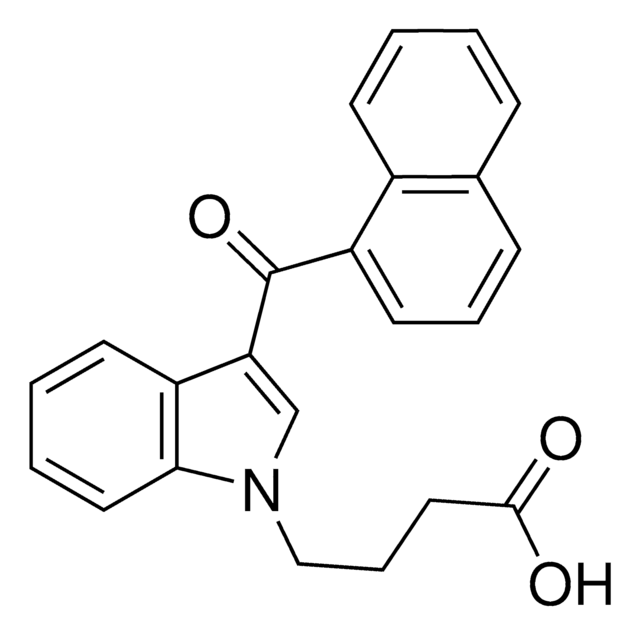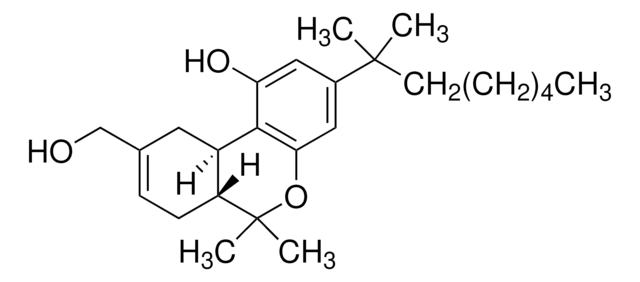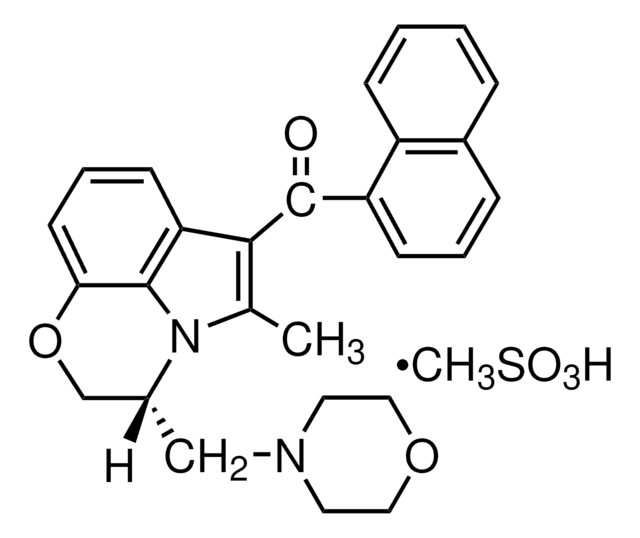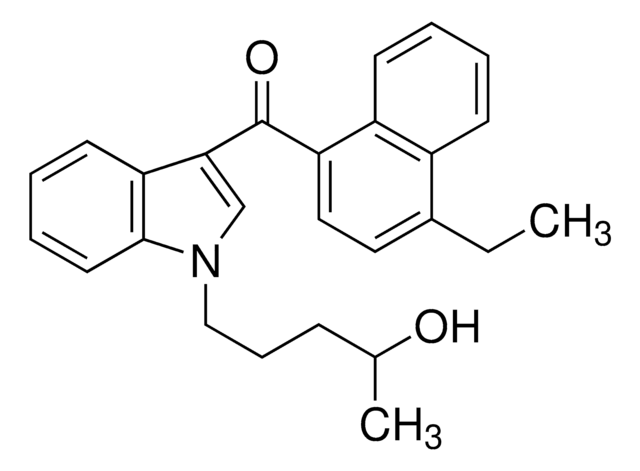おすすめの製品
グレード
certified reference material
品質水準
形状
liquid
特徴
Snap-N-Spike®/Snap-N-Shoot®
包装
ampule of 1 mL
メーカー/製品名
Cerilliant®
drug control
Narcotic Licence Schedule E (Switzerland)
濃度
100 μg/mL in methanol
テクニック
gas chromatography (GC): suitable
liquid chromatography (LC): suitable
アプリケーション
forensics and toxicology
forensics and toxicology
フォーマット
single component solution
保管温度
−20°C
SMILES記法
CCCCCCC(C)(C)c1cc(O)c2[C@@H]3CC(CO)=CC[C@H]3C(C)(C)Oc2c1
InChI
1S/C25H38O3/c1-6-7-8-9-12-24(2,3)18-14-21(27)23-19-13-17(16-26)10-11-20(19)25(4,5)28-22(23)15-18/h10,14-15,19-20,26-27H,6-9,11-13,16H2,1-5H3/t19-,20-/m1/s1
InChI Key
SSQJFGMEZBFMNV-WOJBJXKFSA-N
詳細
In July, 2009, the US Drug Enforcement Agency (DEA) placed HU-210 on its Drugs and Chemicals of Concern list. Since HU-210′s placement on this list, DEA has reported seizures of Spice herbal mixtures in Ohio and Florida. HU-210 is currently listed as a Schedule I controlled substance. In recognition of this regulatory challenge, Cerilliant supplies its certified HU-210 reference standard in a convenient, quantitative, DEA-exempt solution.
法的情報
アプリケーション
関連製品
シグナルワード
Danger
危険有害性情報
危険有害性の分類
Acute Tox. 3 Dermal - Acute Tox. 3 Inhalation - Acute Tox. 3 Oral - Flam. Liq. 2 - STOT SE 1
ターゲットの組織
Eyes
保管分類コード
3 - Flammable liquids
WGK
WGK 1
引火点(°F)
49.5 °F - closed cup
引火点(℃)
9.7 °C - closed cup
適用法令
試験研究用途を考慮した関連法令を主に挙げております。化学物質以外については、一部の情報のみ提供しています。 製品を安全かつ合法的に使用することは、使用者の義務です。最新情報により修正される場合があります。WEBの反映には時間を要することがあるため、適宜SDSをご参照ください。
消防法
第4類:引火性液体
アルコール類
危険等級II
Jan Code
S-024-CC:
S-024-1ML:4548173320694
試験成績書(COA)
製品のロット番号・バッチ番号を入力して、試験成績書(COA) を検索できます。ロット番号・バッチ番号は、製品ラベルに「Lot」または「Batch」に続いて記載されています。
Chromatograms
application for HPLCapplication for HPLCライフサイエンス、有機合成、材料科学、クロマトグラフィー、分析など、あらゆる分野の研究に経験のあるメンバーがおります。.
製品に関するお問い合わせはこちら(テクニカルサービス)